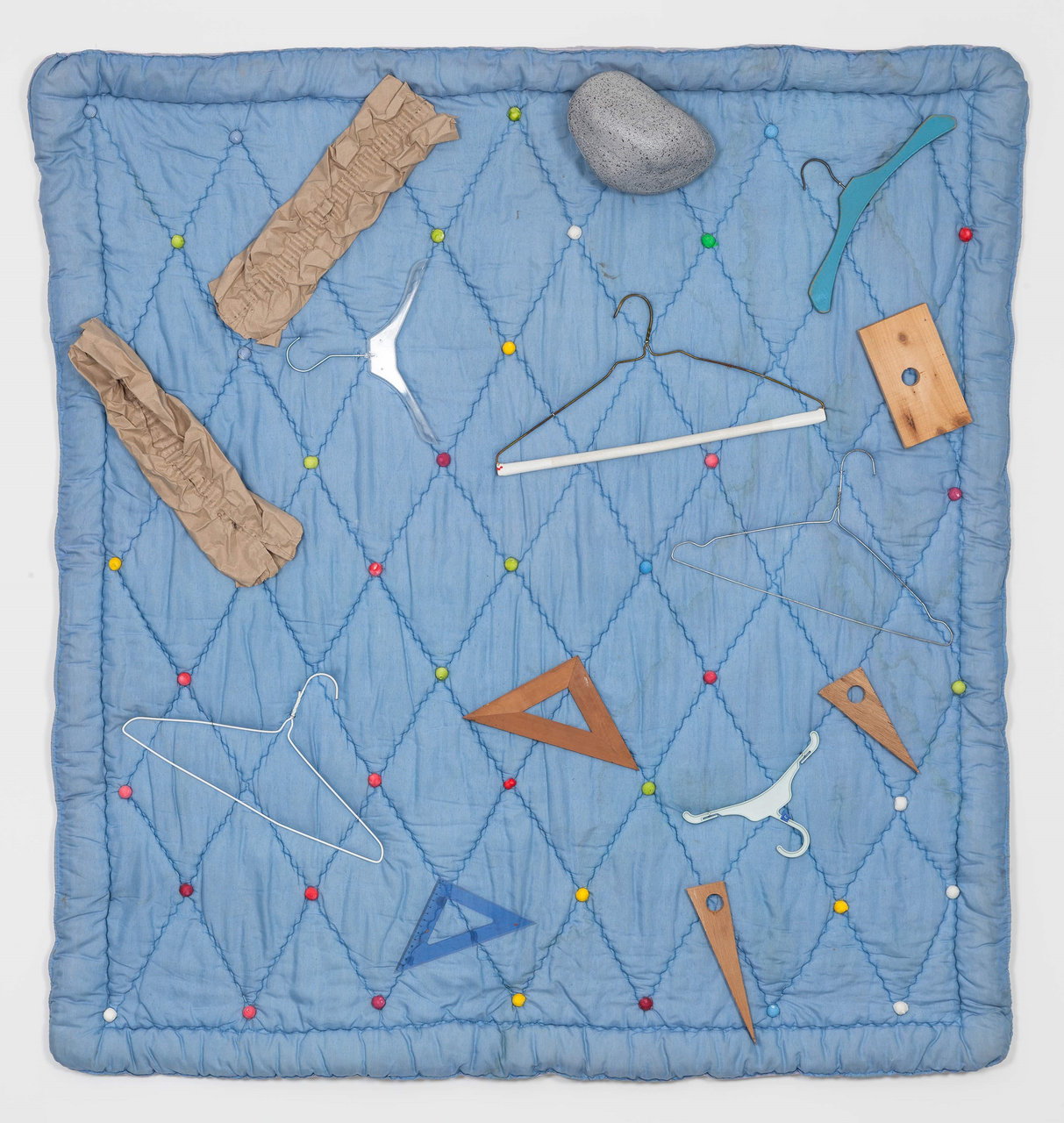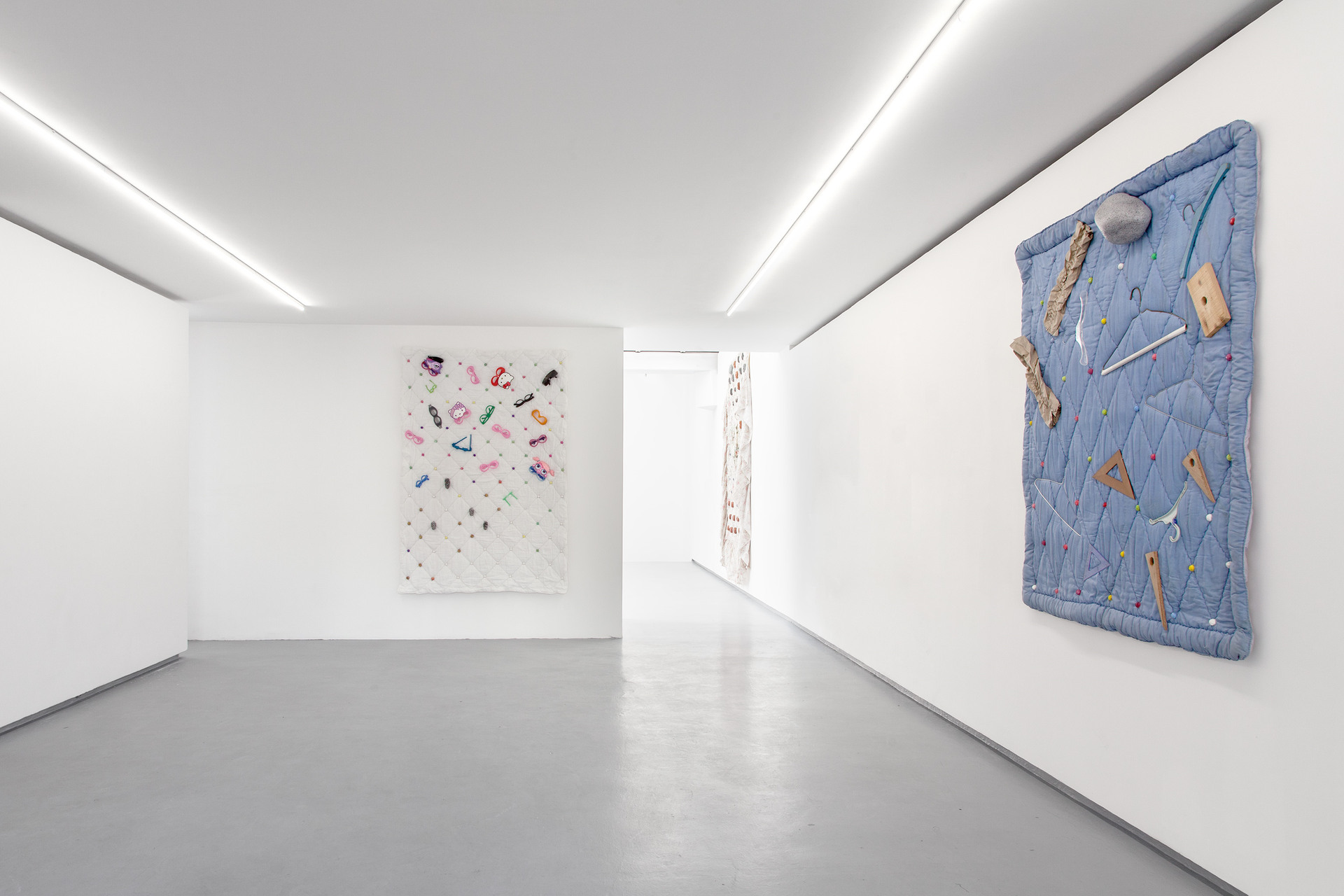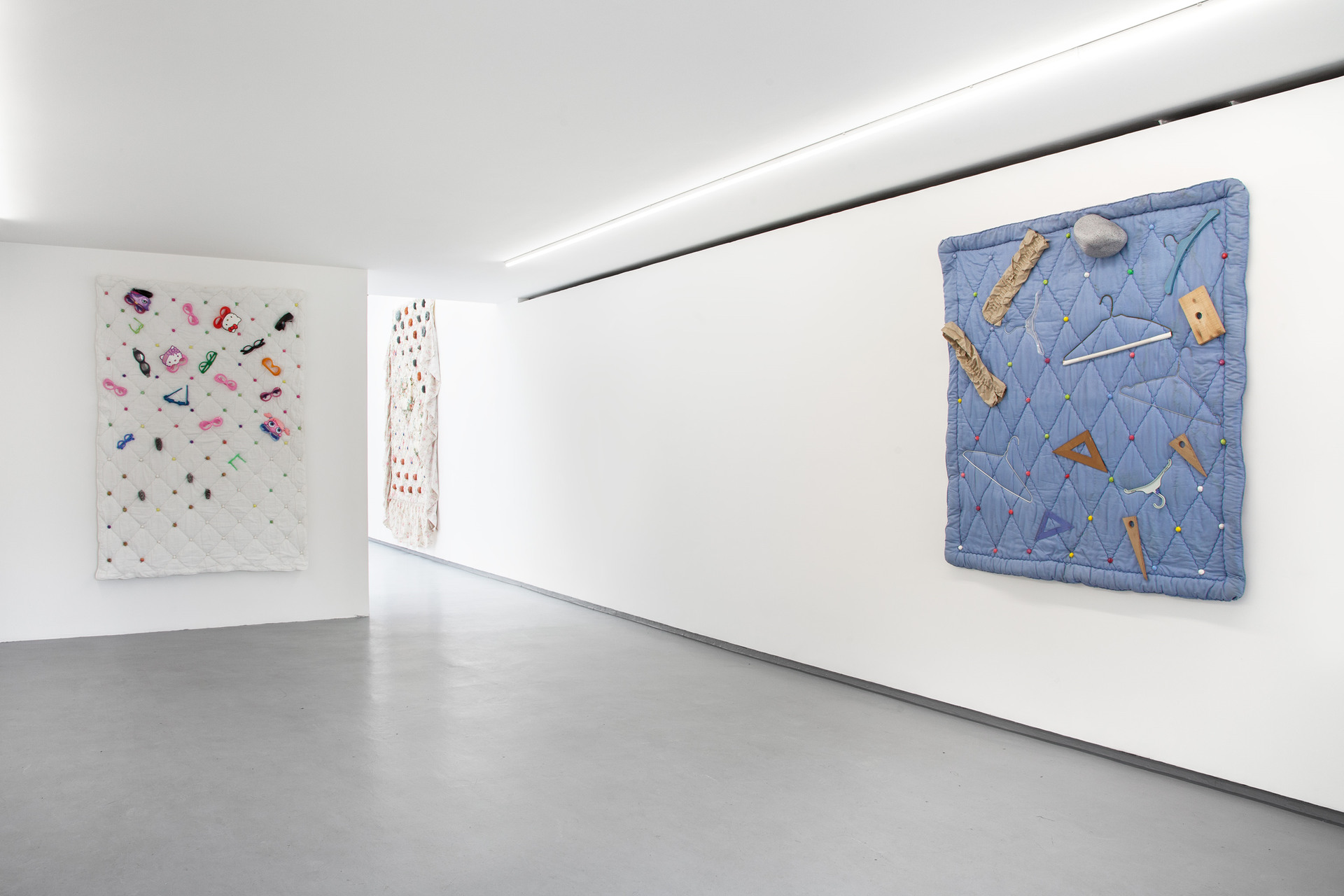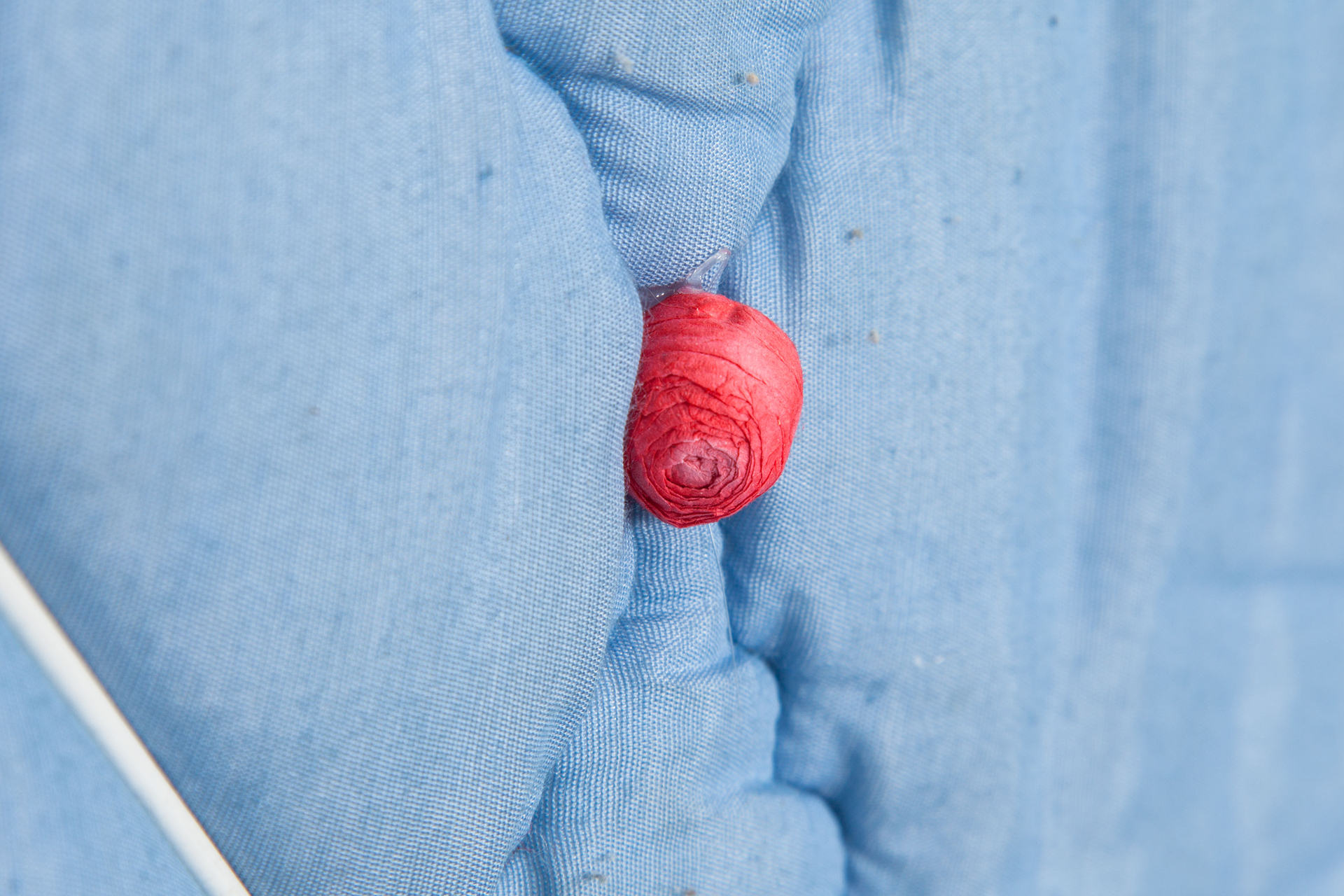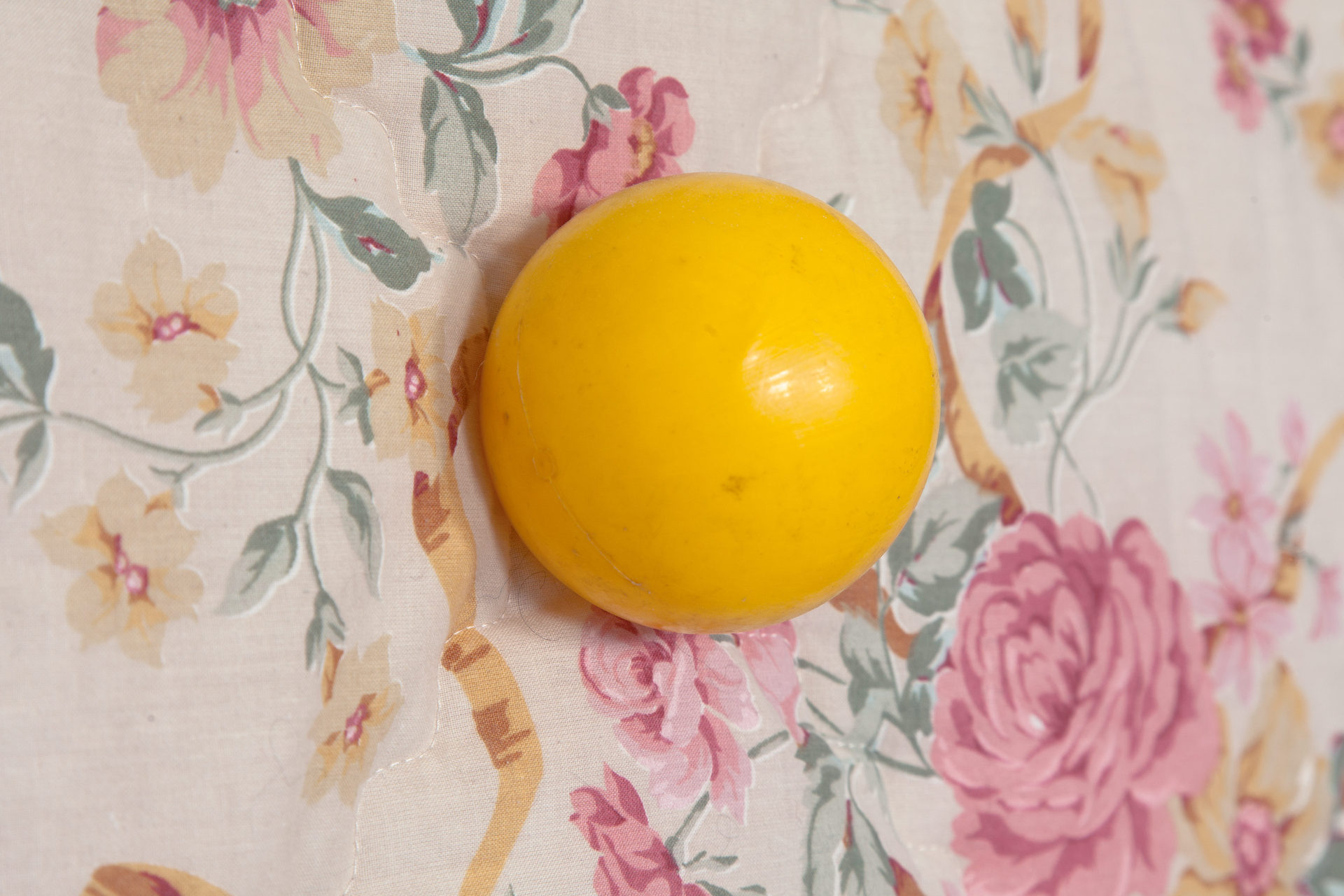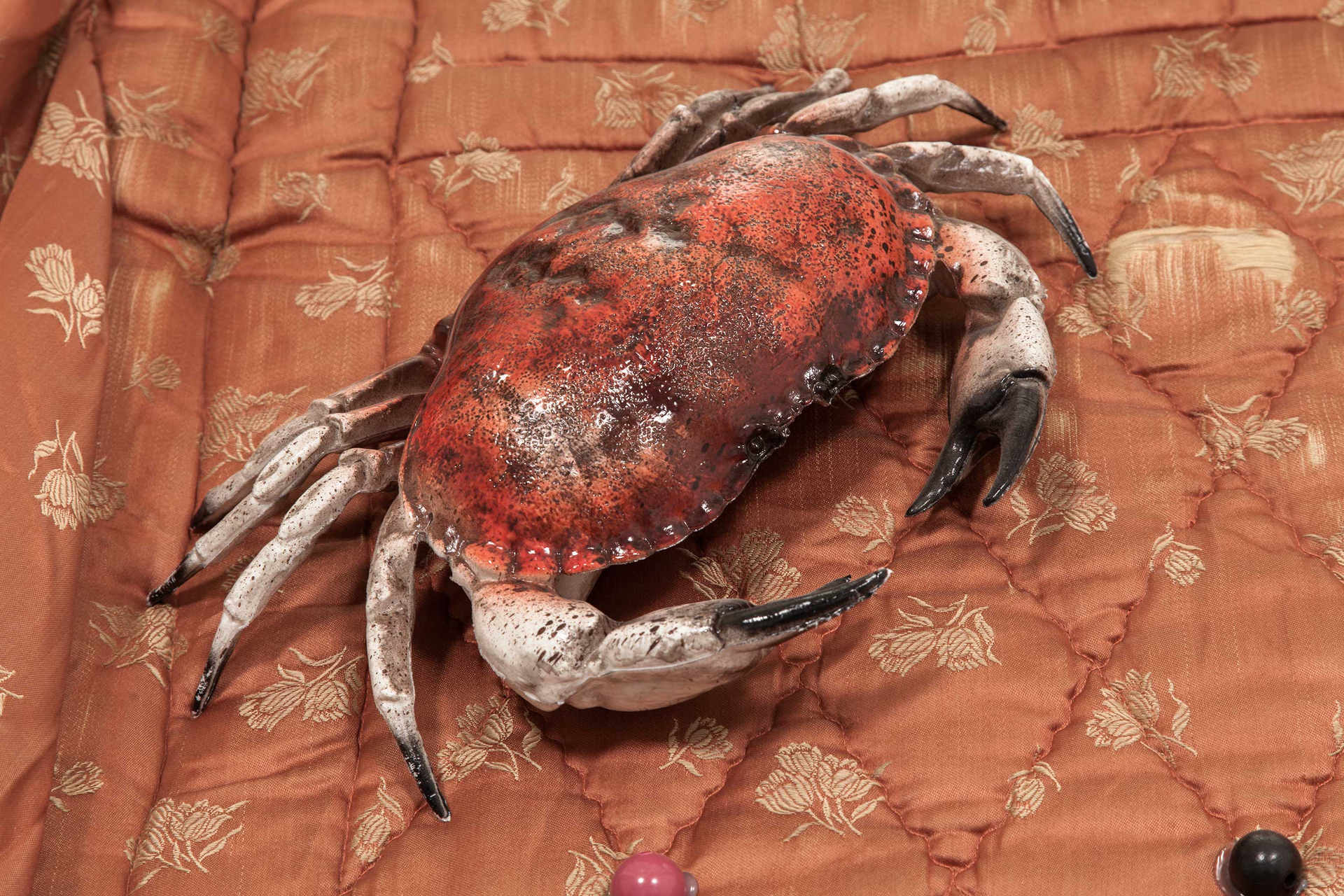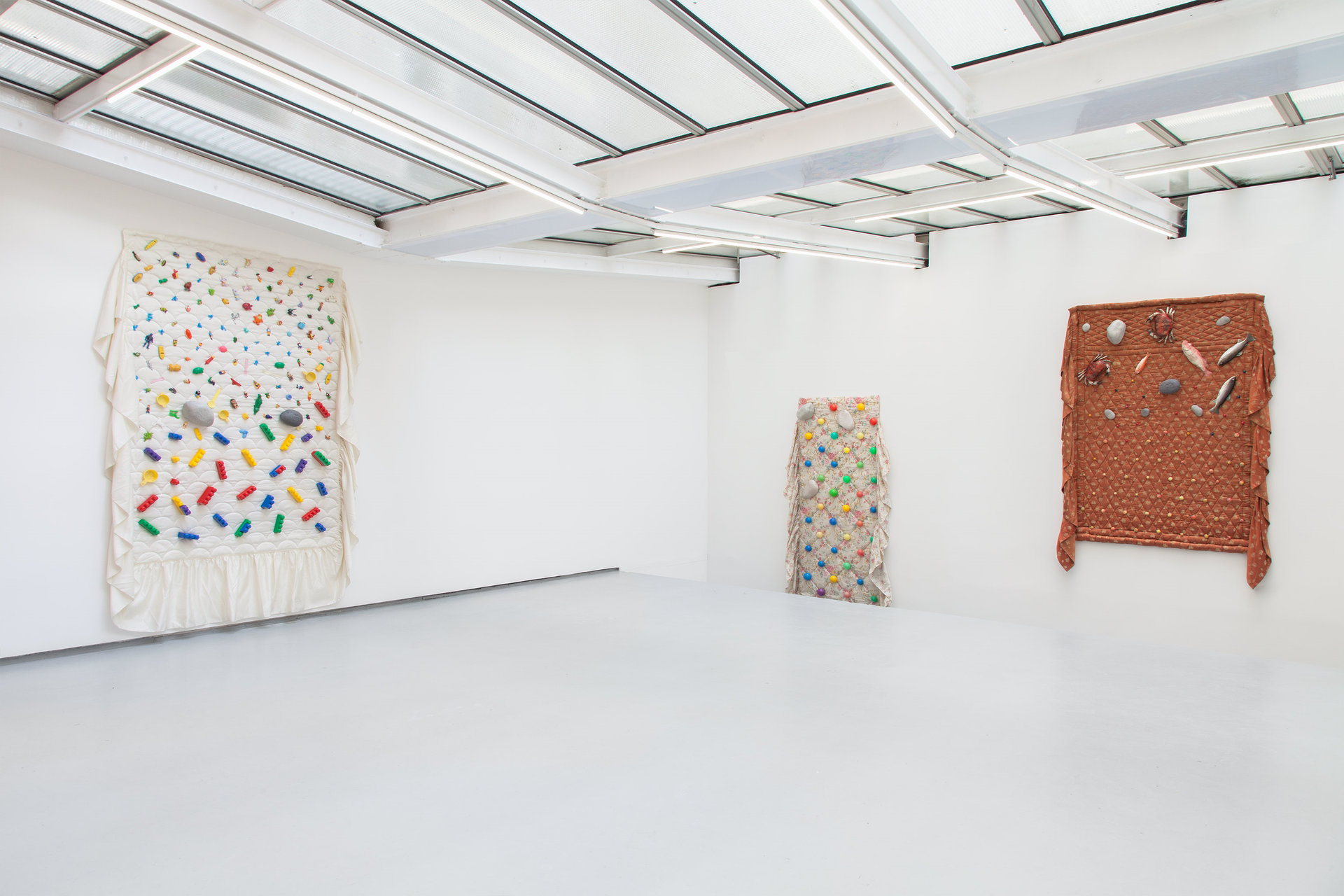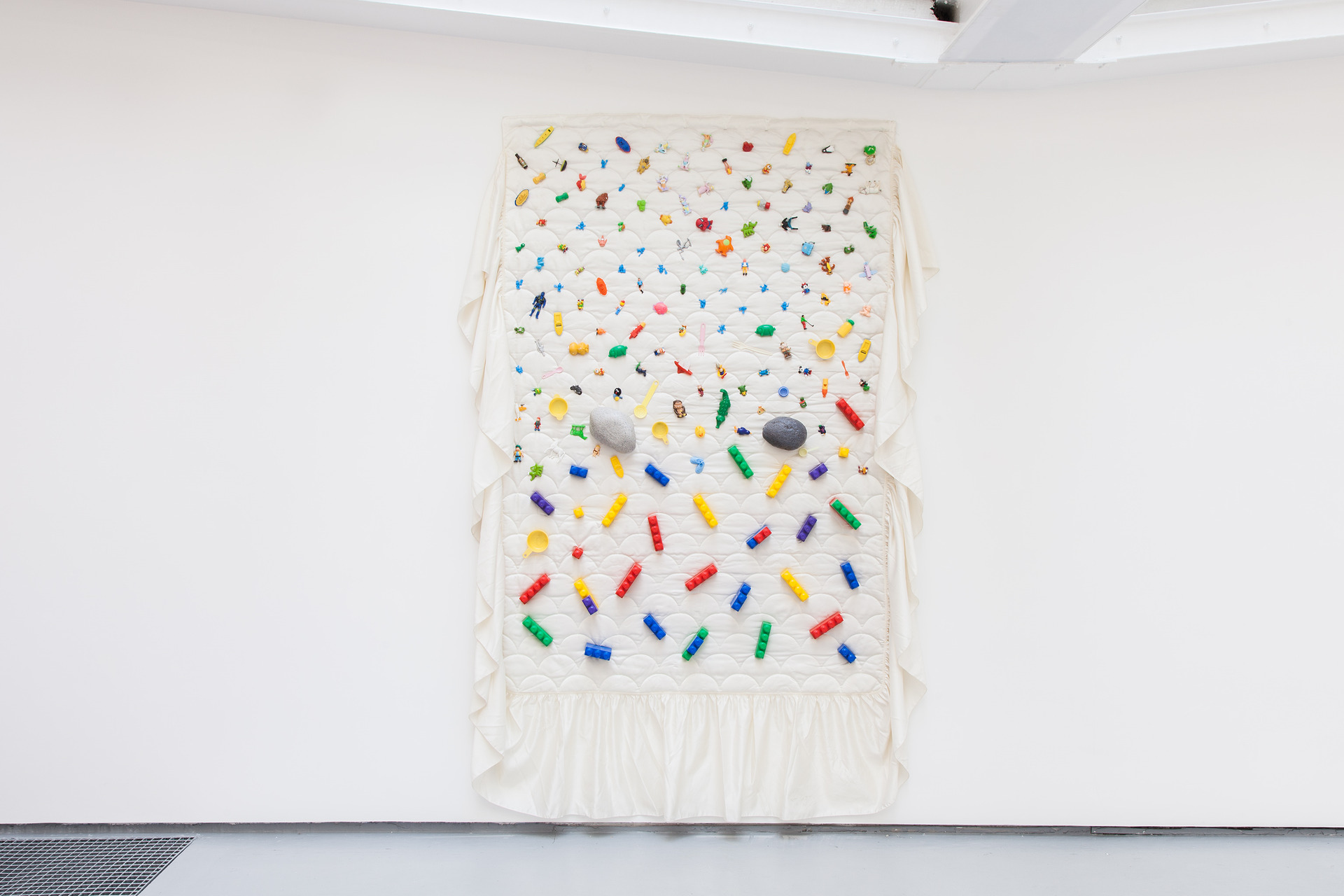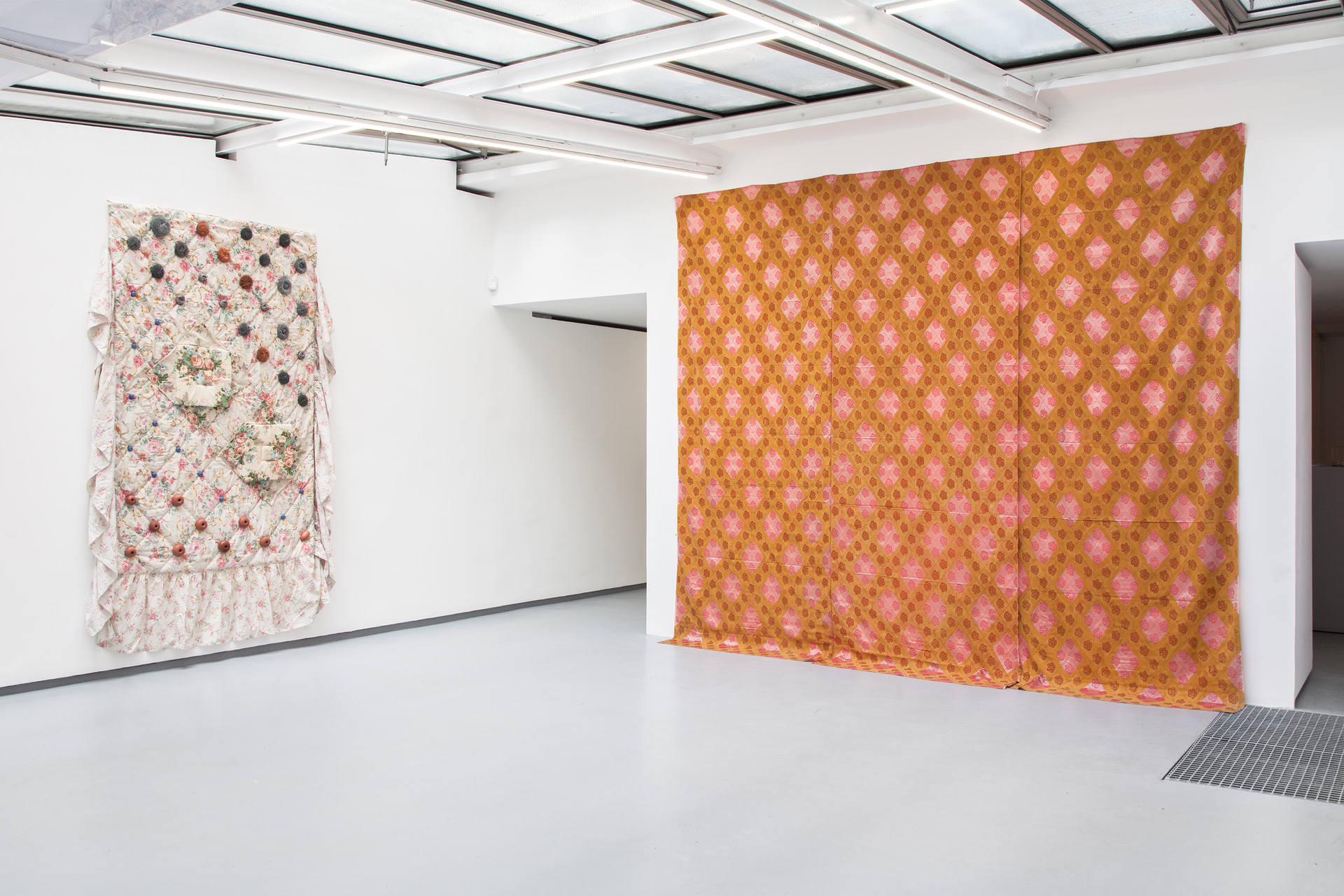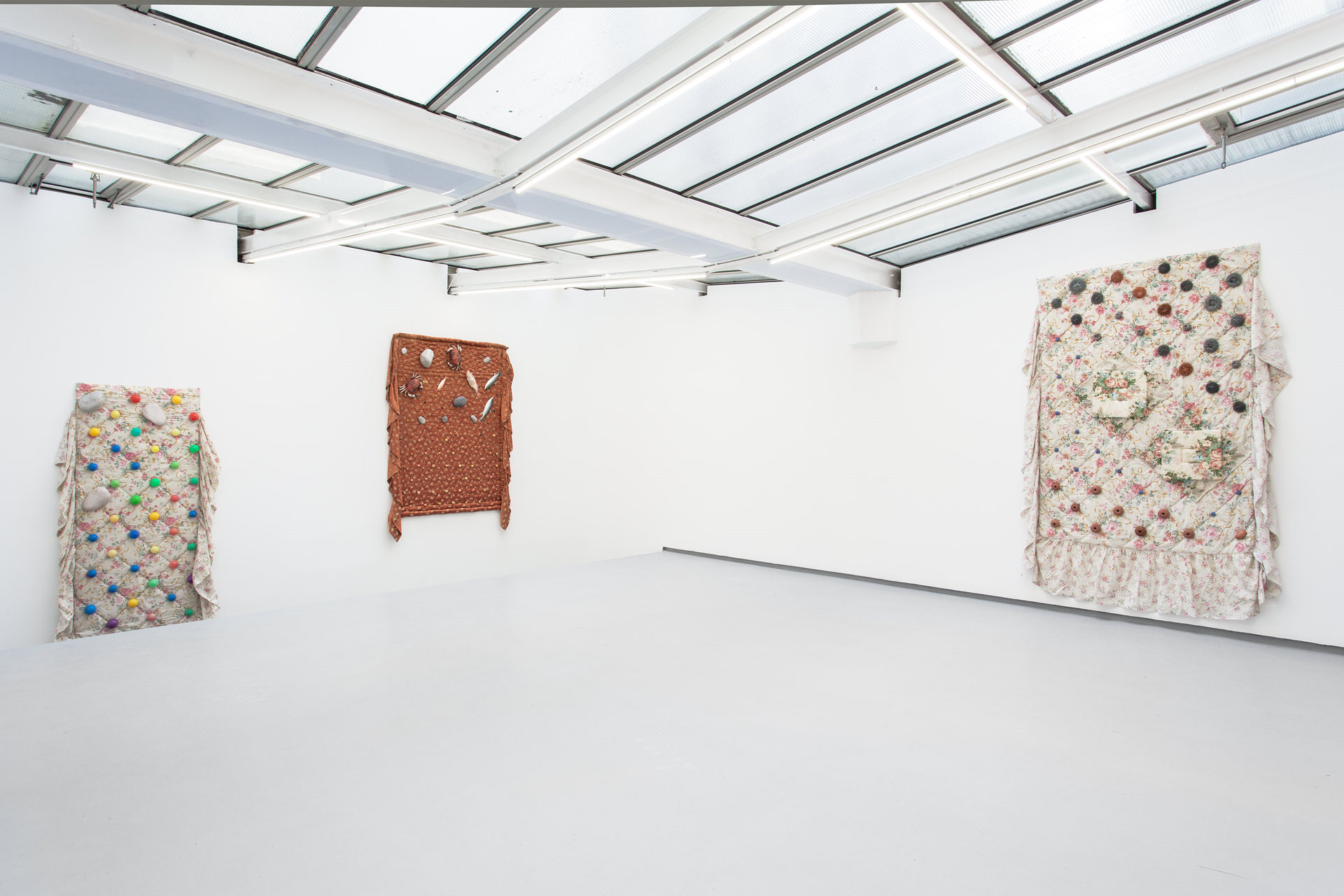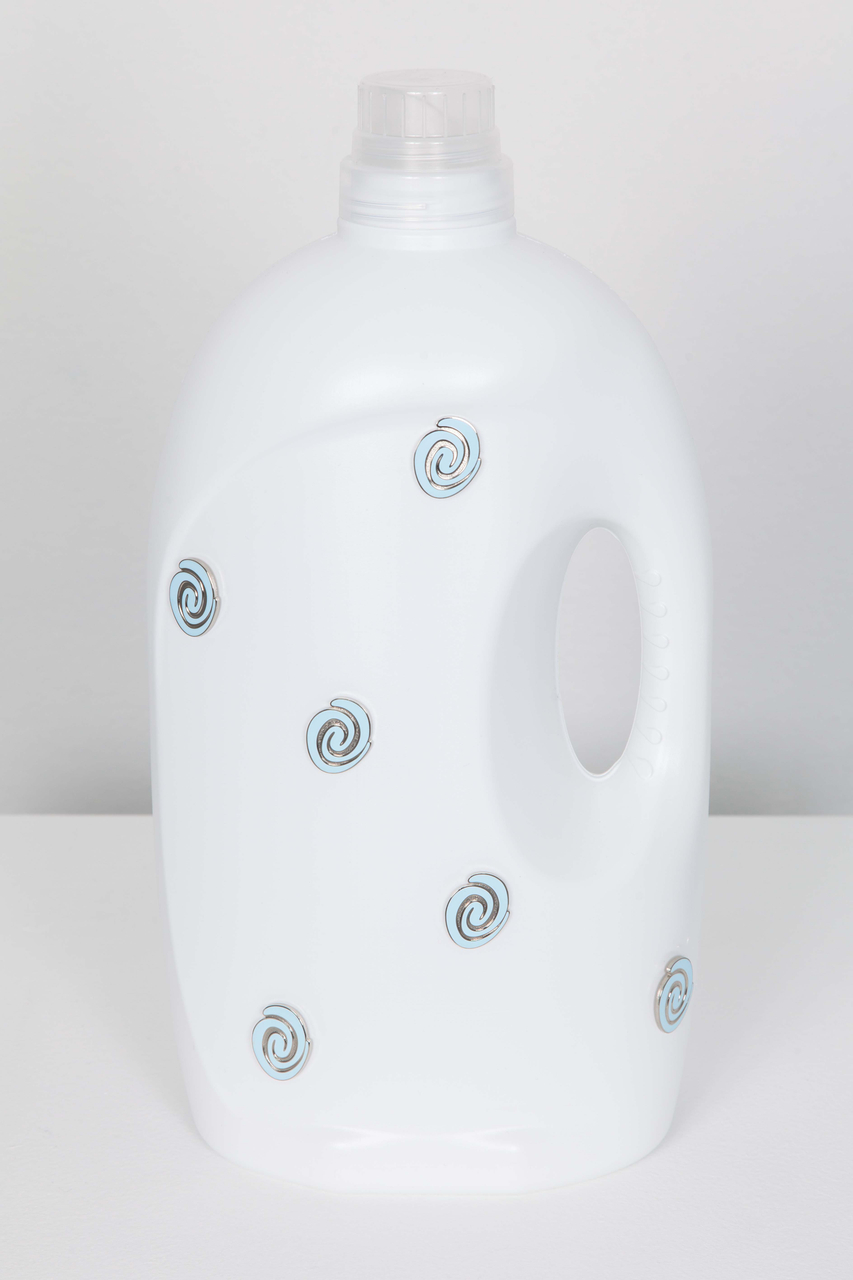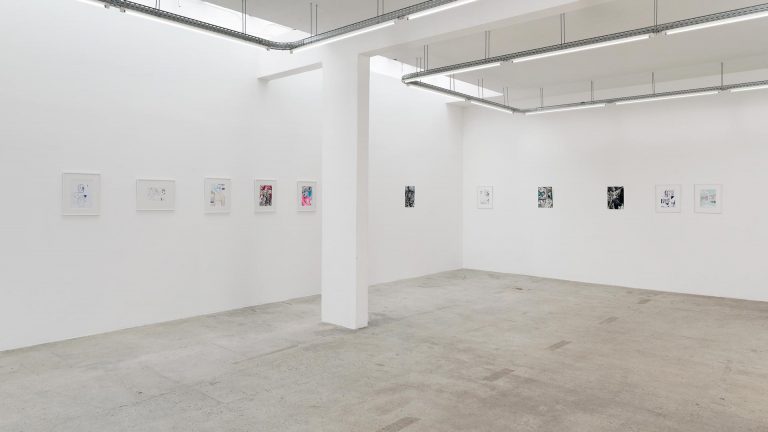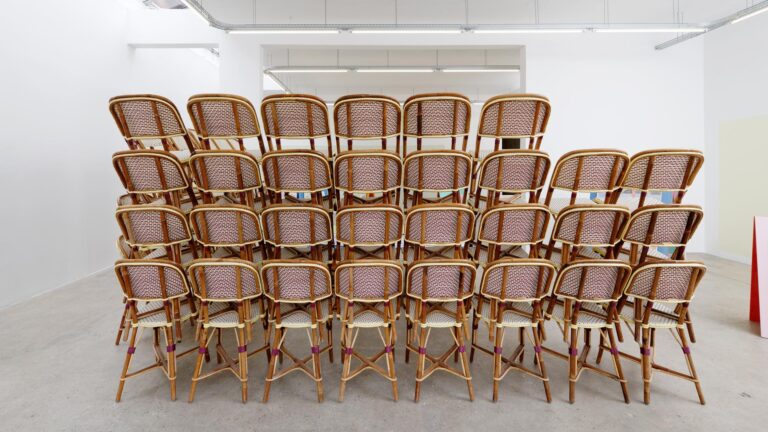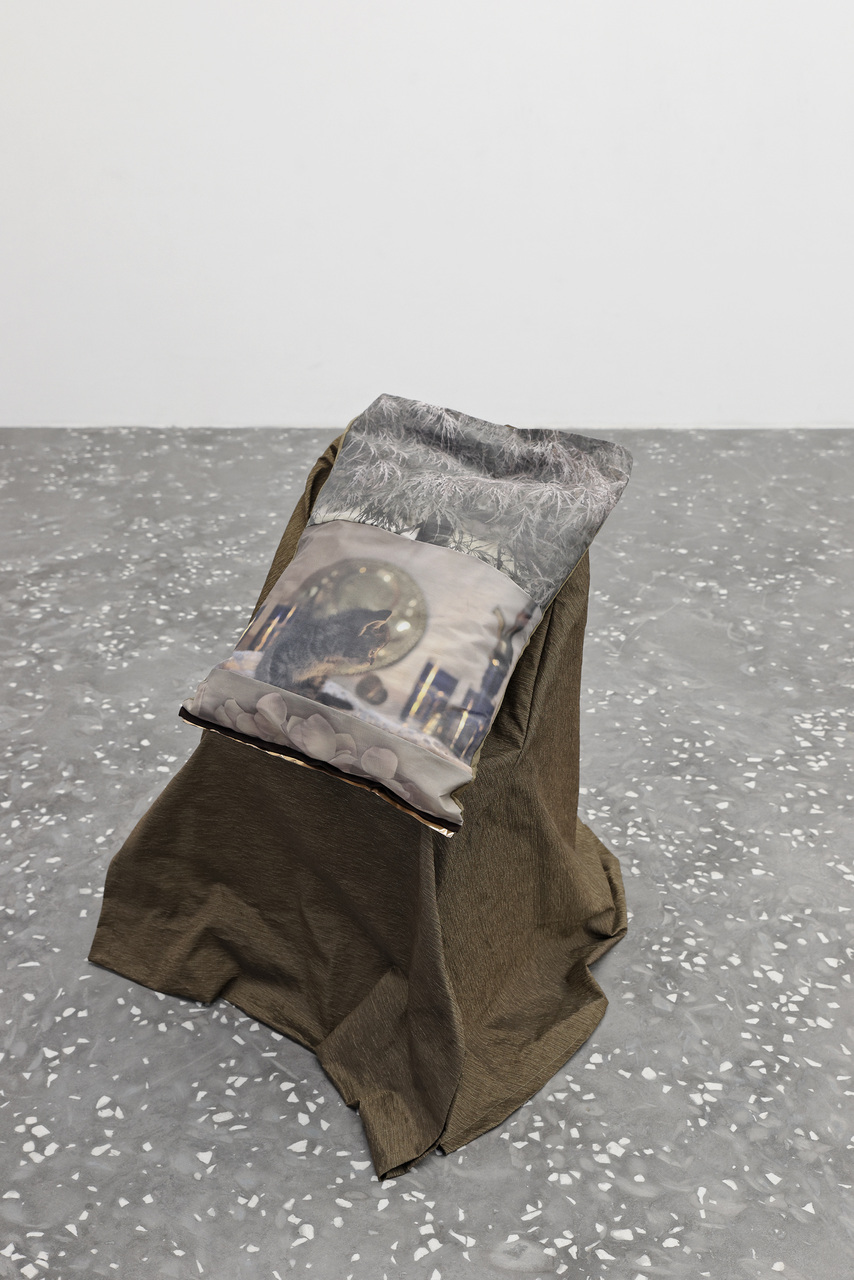Artist: Patrick Saytour
Venue: Valentin, Paris, France
Date: May 21 – June 20, 2015
Photography: SylvieChan-Liat, images courtesy of the artist and Valentin, Paris
Patrick Saytour’s paintings try to get out the representation something that obliterates it, that crosses it out, makes it up and highlights it. This enterprise is based not so much on a negation (exorcism) of the icon (of both painting and artist) as on an attempt to contrast it with what would be its counter-form, its offcut; that which is linked to it into the continuity of excess (art as reality’s counter-form). In Saytour’s work, excess, de-edging, in its theatrical sense, is in the vein of carnivals and rites of reversal, embodied by the figures of the “killjoy” and the “stand-in”.
In using pre-formed pictorial spaces (tablecloths, curtains, nets, rugs, wallpaper, blankets) the artist accepts that things are already given from the outside, and that the work consists in having an impact on, and inserting himself into, that which precedes it : nullification of a theory of taste and a theory of inspiration. Also, the grid, a recurring device in Saytour’s work, materialises the pre-existing outline, the structure in which the artist is always already “caught” (in the sense of being caught in the mesh of a net, in reality).
For Saytour, what contrasts with representation is presentation, action or “intervention”—in short, the way things are “touched” (by that “immemorial vacant gesture” as Mallarmé would say, or what Duchamp would call the grace of “canned chance”, Tyche being the goddess of fortune). The crease and the burn are two of Seytour’s main “tyché” interventions, systematically applied to preexisting reference points on the medium—this time on intersection points between lines, as well as on patterns that a stroke re-marks in a game of obliteration and intensification. These actions reflect the neutrality of the gesture, the “pure” action that intervenes on the canvas by searching for an external reason for its own intentionality.
Another undercurrent of the work, the reprising or “restarting” he initiated in the 1990s, consists in taking old pieces as reference points for new series of works, in a game of self-echoing, of fragmenting the frame of it’s own history, renewing one’s own offcuts and counter-forms in order to create new extremities. “One never settles in to a transgression,” said Derrida. “Transgression implies that a limit is still in effect”. Copying oneself, transgressing oneself, endlessly, not “going beyond” oneself but going over one’s edges: unlimiting oneself in the crossings-out.
The new series of paintings that Saytour is presenting at Valentin continues these restarting excesses. Its outline is provided by a piece of cloth from 1967, a fabric with a floral pattern that the artist traced over with yellow paint, causing a diamond motif to appear in counter-form. This time, the medium that Saytour uses is a series of old bedspreads presenting a stitched grid pattern, some having flower patterns, and fringes over the edges. These bedspreads reflects edging practices (tucking in to one’s bed), as well as the conflict between surface (decorative) and space (like the tablecloth, it limits and presents an area of action and everyday practice). But more importantly, its outdated appearance and underlying anthropomorphism introduce a temporal component, a kind of historicity of experience that the composition reprises, gets out of bed, out of joint (“Time Out of Joint”). Into the bedspread’s preformed weft, the gesture is integrated by jabbing a series of objects at each point of intersection. The jab serves as a substitute for the burning (or overpainting) that was done along the folds—junction points between the different chance parts or series that fragment the painting-unit.
Saytour follows the rhythm of the patterns, adopting a systematism of repetition that serves only as excess, difference; each object connotes and illustrates a potential area of meaning (of representation) and a relation to the series (to the outline, to the statistical diagram). But it evades it, because it is not regular. Like the “small objects” the artist has been collecting, noticing and accumulating for years, grids play on decentring, limitation. The objects “stammer” as part of their ability to produce a representation, not knowing how to do it other than through a “presentation” lacking the weight of authority. They mark a divergence and distrust in relation to the representation as they “adjoin” it (les Attenances [The Adjoinings], 1984-2009).
Small plastic toys, manufactured chinoiseries, sunglasses, artificial fruit and fish, fishing weights, scouring pads: the objects suggest proximity, never a lack of privacy (no pathos of privacy, and of interiority, that which Matisse managed to get beyond by discovering the counter-form through paper cut-outs). They have a borderline form of “garish” invisibility, between the decorative and the utilitarian, between representation and everyday activity, between plastic sign and social sign, emotional value and exchange value. The distribution is spontaneous, objective, not informed by the objects’ emotional weight. Their composition tends to designate communities of things, forms and colours. Intensification damages the object’s identity, playing on various optical effects of density and intensity. Touching and covering the blanket, these objects are like small gashes that allow us to imagine the plenitude of certain realms, impacts showing on the surface like strokes of colour.
These new pieces are also abstract paintings in the sense that they concern the abstraction of time, its calculation and renewal, and they also have to do with a history of “time painting”, vanity painting and still-life painting. They seem to designate, like portraits: automatic portrait of the artist as an “old child”—an oxymoron that Saytour likes to use.
Text by Clara Guislain

